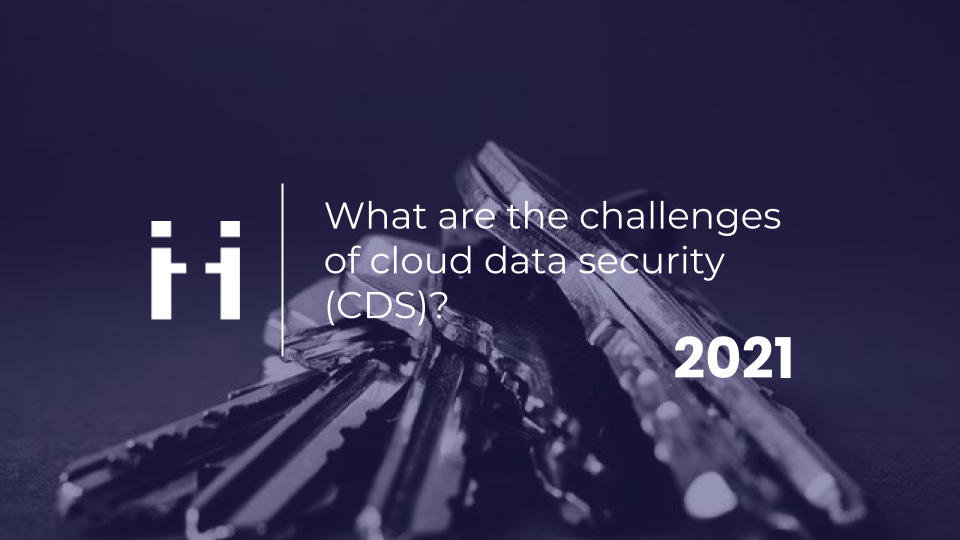
Share this article
Share this article
Cloud data protection is a strategy that aims to protect a company’s cloud-hosted data, wherever the data is idle or in active use, as well as whether the data is hosted on-site or externally by a third party.
With cloud computing becoming the norm for many companies, it’s easy to focus on the improved convenience and other benefits of this technology. In fact, as working from home has become widespread, cloud computing has continued to grow in use. But what are the downsides?
While cloud computing is relatively secure, your data is stored on a remote server, making them more vulnerable to hackers than on-site servers. According to a report by Oracle and KPMG, there is a gap between the adoption of cloud services and adequate security measures. 92% of respondents reported having a readiness gap with cloud security. So how can companies mitigate this risk while still reaping the benefits of using the cloud?
Even before migrating to the cloud, IT teams were tasked with ensuring organizational security in the digital realm. Cloud services add to the complexity of providing this security, especially when multi-cloud setups are added to the mix. It is important to ensure security and compliance to get the most out of cloud computing while reducing risk. Among the detailed list of best practices for cloud security by Carnegie Mellon University, here are some of the main points:

It’s essential to plan for future risks. Adopt a cybersecurity framework that includes cloud infrastructure. Develop and deploy your security controls system to identify security issues. Put it into operation, but be ready to decommission it when a threat arises.
Enlist a manager security advisor from your IT team. Identify who your users are and authenticate them. Make sure access is only granted to those that are entitled to it. Don’t give employees access control that they don’t need to do their job.
Enact safeguards to keep data safe from unauthorized access to the cloud environment and cloud storage. Protect critical data from loss. Make sure deleted data in the cloud is really deleted.
These best practices are vital to ensuring your cloud is secure against threats.

The Oracle/KPMG report on cloud security states that misconfigured clouds, for example, giving too many permissions to users, present many vulnerabilities. Unprotected cloud information like passwords and login credentials are vulnerable to hackers looking for this kind of information. These situations can lead to data breaches and even data loss by hackers.
Public clouds host multiple tenants and therefore are more vulnerable to security threats. Cloud security rests both on the cloud service provider and on the client itself. Once you choose a trustworthy vendor for your cloud services, you need to ensure that your end of the cloud is secure. Measures aimed at preventing human error and protecting data need to be clearly mapped out from day one. When it comes to medical information and other sensitive data, there are particular challenges. Let’s explore these more in-depth.
Whether physical documents or digital files in the cloud, sensitive data present challenges to protect them from vulnerabilities. Even in a non-digital environment, sensitive data must be protected to prevent it from getting into the wrong hands. The internet has given hackers the capability to reach you from anywhere and sell data for profit on the internet’s dark corners. The fact that clouds are always connected to the internet increases their vulnerability.
Private clouds are easier to conform with specific laws like GDPR or HIPAA (sensitive medical information), but they’re not foolproof. At the same time, the US Cloud Act could conflict with the EU’s GDPR policy, which has forced some companies to separate their US operations to comply with both.
External companies like Google or Microsoft often manage cloud data services. This external control presents a challenge because you don’t have the same control over the data as your own servers. At the same time, these huge cloud platforms invest in state-of-the-art security, which may be more robust than what your company could afford alone.
There are additional safeguards for data security, retention, and disclosure regarding healthcare or financial-related information. Clouds using this information must conform with HIPAA and other laws. Google, Amazon Web Services, and other major cloud service providers (CSPs) comply with HIPAA requirements and other standards like ISO 27001 and 27017 related to cloud data security.
At the end of the day, whether physical or digital documents, the human element is critical in protecting sensitive data. It is essential to enact procedures to handle, dispose of, and permanently delete such information when no longer needed or legally required. Data backups, Two-factor-authentication and regularly verifying permissions and security settings are a few keys to mitigating human error in cloud security. While cloud computing presents new challenges in managing sensitive data, more and more companies are deciding that it makes up for it in convenience and connectivity.
Knowledge management is the art of ensuring your employees have easy access to important information in an instant. ViiBE’s download-free web app makes it easier than ever to connect via video when it comes to customer service or remote assistance. ViiBE’s download-free app is a more secure approach than screen sharing software or remote access software. ViiBE’s secure WebRTC-based video call app keeps call-related information in a cloud-based knowledge base. You can easily download photos, documents, or the video of the call itself as needed. ViiBE’s ticketing solution organizes multiple calls under one ticket, making it easier to pull up past interactions when necessary. ViiBE’s app works on any internet-connected device with a camera.
Cloud adoption is driven by the convenience and lower cost of cloud computing. These advantages must be weighed against the risks of always-on servers that are often shared with other tenants. Above all, companies need to prepare for potential threats and have plans to mitigate any data loss. Clouds are a crucial component of knowledge management, which improves productivity by facilitating access to essential documents. ViiBE’s call software offers a built-in knowledge base to access all relevant call-related information at your fingertips. Security is a priority for ViiBE, which has built its app on WebRTC technology. Whatever you’re using the cloud for, cloud data security is more important than ever.